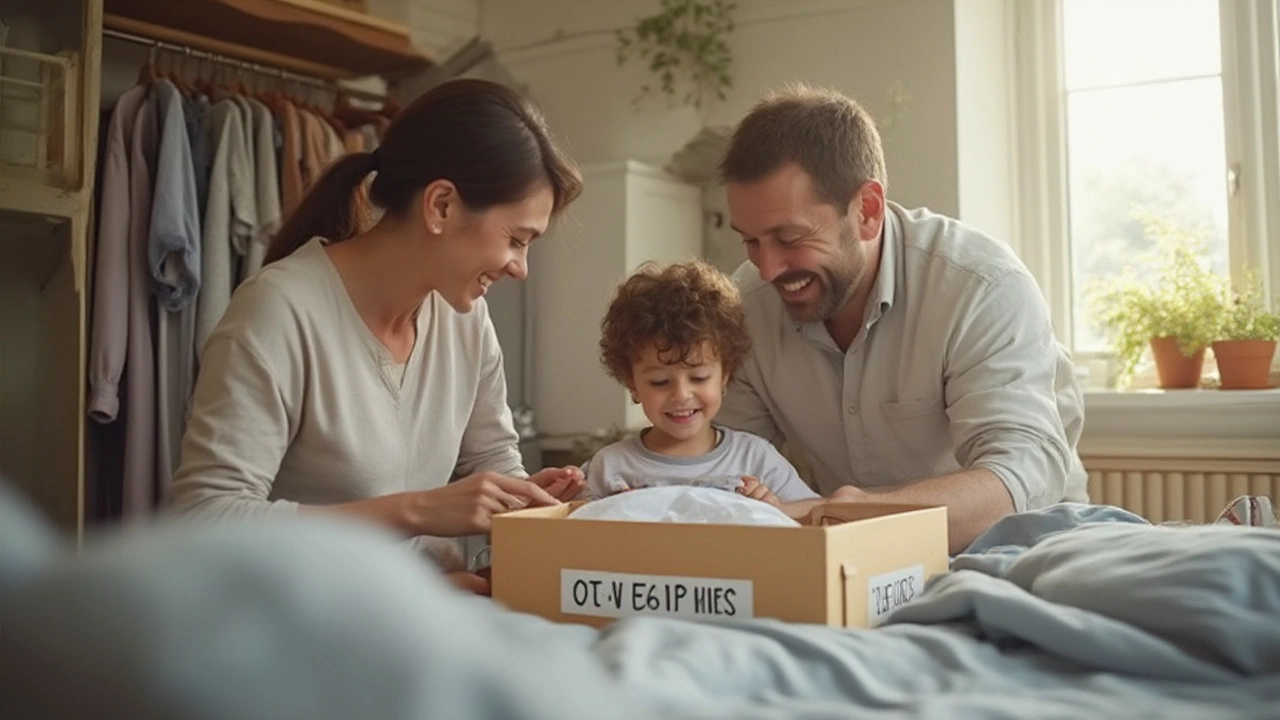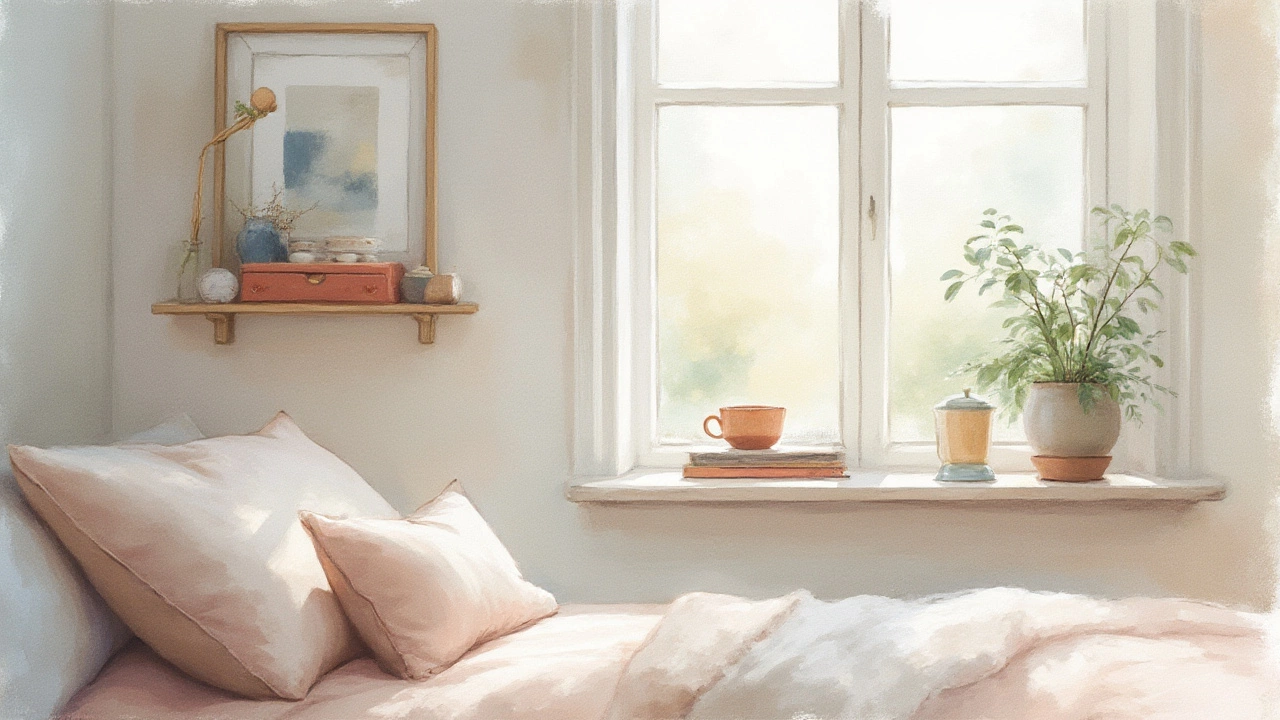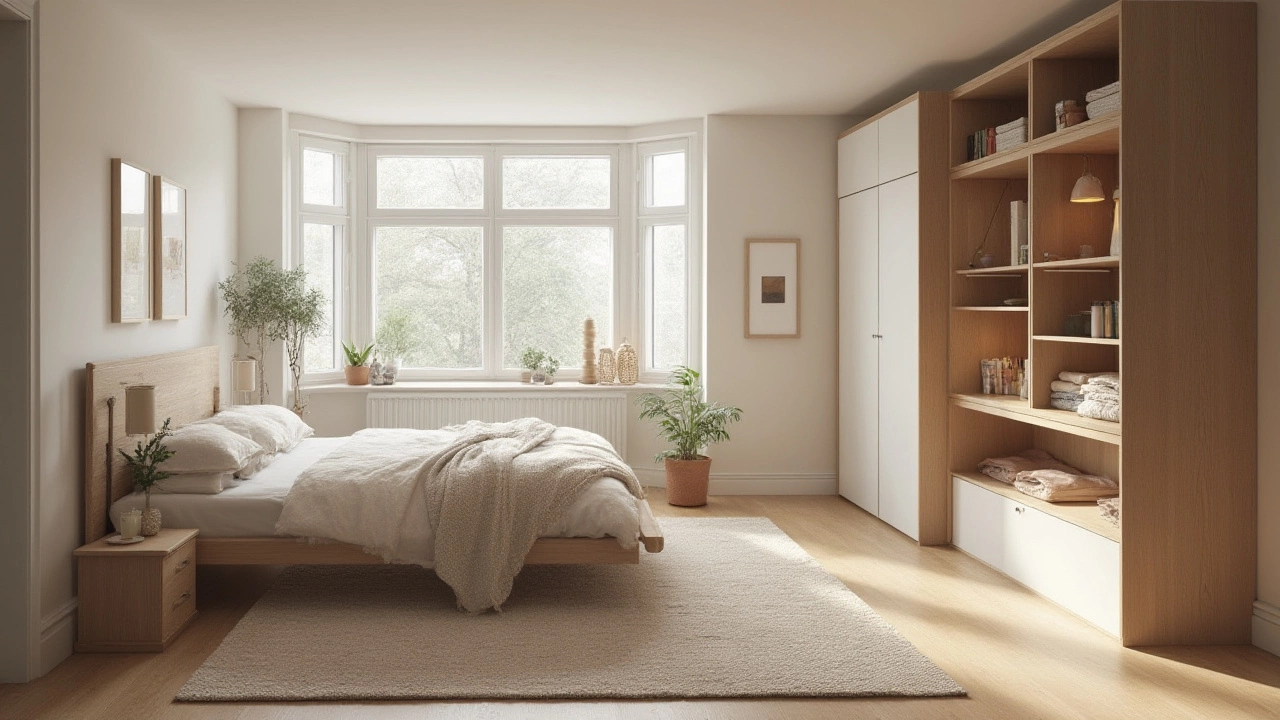Ever wake up more tired than when you went to bed, just because your room feels chaotic before you even hit the light switch? You’re not alone. Our bedrooms often turn into storage lockers, laundry stations, makeshift offices, and — let’s face it — the place where all those random things with no home finally end up. The average person spends about a third of their life asleep, according to the CDC, and the vibes in your bedroom matter more than most of us realize. A messy, overstimulating space can up your stress, tank your sleep, and make finding your socks feel like a daily quest. If your goal is less chaos and more calm, the path is all about simplifying. And it doesn’t have to cost a fortune or eat up your weekends. I’m all about getting practical: let’s make your bedroom the ultimate chill zone, not another source of stress.
Why a Simpler Bedroom Makes a Bigger Difference Than You Expect
You might think a cluttered bedroom is just an eyesore, but science says it impacts your mood and even your health. A Princeton study found that physical clutter in your visual space competes for your attention, which reduces performance and increases stress. The American Sleep Association points out that clutter increases feelings of guilt and anxiety, making restful sleep harder to achieve. A simple bedroom signals to your brain that it’s time to relax and wind down. Less stuff means fewer distractions, less dust (another bonus if you have allergies), and less rushing around trying to find what you need in the morning.
Want a punchier fact? The International Sleep Products Association claims people fall asleep faster and get better quality zzz's in rooms with minimal stuff. People also report waking up happier and being less likely to hit snooze a dozen times. The visual peace literally makes your brain feel safer and calmer. So, when you clear your bedroom clutter, you’re not just making things look nicer — you’re actually making your daily life better, one pillow at a time.
Seeing your bedroom with "fresh eyes" is usually the first step to simplifying things. You know how a hotel room feels instantly relaxing? That blank-slate look calms you down because every item has a purpose, and nothing is too loud or busy. Aim for that feeling — not sterile, but streamlined. Instead of thinking you need to buy all new stuff, consider what you already have and what you can let go of.
Decluttering Like You Mean It: The Easy Way to Let Things Go
Decluttering sounds like a big job, but if you break it down, it’s totally doable. The trick is just to start somewhere. Most people keep things out of habit, not necessity. Research from the UCLA Center on Everyday Lives of Families showed American families hold onto an average of 300,000 items in their homes, and bedrooms often hide more than their share. Those unworn shirts, broken lamps, and half-read books? They take up space in your brain, not just on the dresser.
Here’s a simple way to start:
- Begin with just one category: clothes, nightstand clutter, or decor.
- Empty it all out — every item, onto the bed or floor.
- Only put back what you actually use or love.
- Bag the rest for donation, recycling, or tossing.
This feels weird at first, but the moment you see clear space again, it clicks. If you’re stuck, invite a friend who’s not sentimental about your stuff. Or, set a timer for 15 minutes so you don’t get overwhelmed. Did you know that most of us only wear about 20% of what’s in our closets, according to a 2022 ClosetMaid survey? So those jeans you think you’ll fit back into someday aren’t earning their real estate. Letting go frees up space and guilt.
Be ruthless about duplicates, too. How many phone chargers, water bottles, or spare blankets do you actually need in your bedroom? If your bedside table is overflowing, ask yourself: when was the last time you needed more than a lamp and your current bedtime read? Keep surfaces as clear as possible — researchers at UCLA found the less visual clutter you see right before bed, the less likely your brain spirals into anxiety mode.

Smart Storage and Organization Hacks That Actually Work
Storage doesn’t have to look like something out of a home improvement show — but the right tricks save time, reduce mess, and make life easier. The key is choosing storage that fits your habits, not someone else’s fantasy. Under-bed storage is one of my all-time favorite moves; if your bed’s got a decent amount of height, rolling bins or soft bags make stashing extra bedding or out-of-season clothes simple. IKEA claims their SKUBB boxes reduce organizing time by up to 30% for users (yeah, the Swedes took measurements on this!)
Vertical space often goes unused. Shelving above your bed or inside your closet doors adds room for baskets or boxes without eating into your floor area. Wall-mounted hooks aren’t just for hats and robes — hang up headphones, bags, or even your next-day outfit. If dressers have become junk drawers, add dividers or trays to keep socks and smaller items where you can actually find them. Real Simple magazine ran a test in 2023: participants who labeled their organizers spent 40% less time searching for stuff over a week.
- Invest in matching storage bins for shoes or accessories. Visual consistency keeps the chaos at bay.
- Keep nightstands small. More surface area = more room for clutter piles.
- Use a slim rolling cart for things that don’t have a home (think: electronics, chargers, books). You can wheel it out of sight.
And don’t ignore your closet: use slim, non-slip hangers to create more space and force yourself to pare down your wardrobe. Bonus points if you do a color sort — makes finding things in the morning much easier. Here’s a quick table of time saved according to a ClosetMaid study:
| Bedroom Area | Time Saved per Week (Average) |
|---|---|
| Decluttered Nightstand | 20 minutes |
| Organized Closet | 45 minutes |
| Under-Bed Storage | 15 minutes |
Simple Decor for Maximum Calm (Without Feeling Bare)
Minimalist bedrooms sometimes look cold in design magazines, but you can have simplicity and personality. The trick is focusing on a calm color palette and limiting decorative pieces. Research from the National Sleep Foundation shows soft, neutral tones — light gray, pale blue, soft green, beige — are best for winding down. Strong reds and bright neons? Those actually spike your heart rate, which isn’t great right before bed.
When it comes to bedding, stick to quality over quantity. Washable duvets, a couple of favorite pillows, and a throw blanket are a better bet than a tower of decorative pillows that just get tossed on the floor every night. A good rule: If it takes more than two minutes to make your bed, you’ve got too much stuff. Bring in texture — a knitted throw, a woven basket, or natural wood accents — for warmth instead of loading up on knickknacks.
Lighting makes a bigger difference than people realize. Opt for soft, warm bulbs rather than cool or harsh light. Table lamps with dimmers let you wind down slower, and blackout curtains block early morning sun (or streetlights if you live in the city). Limit wall art to one or two pieces you love. Set up a small, real (or very realistic) plant — NASA did a study showing plants like snake plant or pothos genuinely improve air quality and mood. Just keep things low maintenance: the simpler you keep it, the longer you’ll actually enjoy it.
- Keep only essentials on your bedside table: a lamp, a good book, a glass of water. Everything else can go somewhere else.
- Mount your TV or banish it altogether if you’re serious about winding down. Guideline: the fewer screens in the room, the more rested you’ll likely feel.
- Consider a weighted blanket if you struggle with anxiety. Studies from the Journal of Sleep Medicine and Disorders say it can help lower stress and boost melatonin.

Building Simple Bedroom Habits That Stick (So the Chaos Doesn’t Creep Back)
Simplifying isn’t a one-time activity. Habits are the glue that keep your room feeling calm from day to day. The secret is making it automatic. One trick that gets cited by habit experts like James Clear (author of Atomic Habits) is "habit stacking": attach a new habit to something you already do. For example: Fold and put away just one thing every time you make your bed. Or: Toss laundry into the hamper as soon as you change, instead of letting it pile up somewhere else.
Develop a 60-second reset at night — set a timer and pick up anything left out before you hit the lights. When you keep it quick, you’re more likely to do it. Most people, according to a 2024 Psychology Today poll, struggle to stay tidy because their systems are too complicated. The simpler your organization, the easier it is to maintain.
Get a laundry routine that works for you. Maybe it’s doing a load midweek, or only when your basket gets to a certain level. The goal is to keep dirty laundry from taking over the space. Same with mail, paperwork, or whatever else sneaks in: Set one day each week to deal with that stuff so it never becomes a mountain.
- Open windows often. Fresh air clears out stale energy as much as it does stuffy smells.
- Commit to a "one-in, one-out" rule: every time you bring something new in, donate or toss something old.
- Enlist a partner or roommate in the process. You’re more likely to stick to simple habits if you’re not the only one invested.
- Regularly revisit what’s working and what’s not — your room should support you, not stress you out.
Simplify bedroom might sound like you’re missing out on all the fun, but here’s the kicker: most people report loving their bedrooms *more* after letting go of the extras. There’s something about open space and easy choices that sets you up for better mornings and much more restful nights. You don’t have to go full minimalist monk, just create a space that makes you happy to land there at the end of each day.
